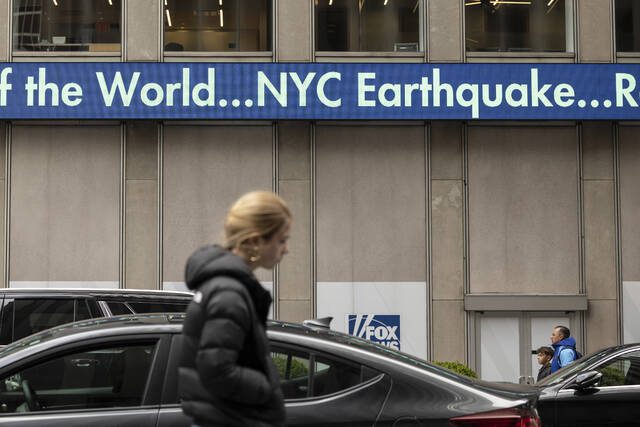DALLAS — Residents on the East Coast were surprised on Friday by a 4.8-magnitude earthquake centered near Lebanon, New Jersey, with slight tremors felt as distant as Baltimore and the Massachusetts-New Hampshire border. No injuries that pose a threat to life or major damage have been reported.
Here’s what you should understand about earthquakes on the East Coast.
How frequently do earthquakes occur in New York City and the East Coast?
Earthquakes large enough to be felt by many people are relatively rare on the East Coast. Since 1950, there have been about 20 earthquakes with a magnitude above 4.5, according to the United States Geological Survey. That is compared with over 1,000 on the West Coast.
However, East Coast earthquakes like the one experienced on Friday do occur.
“There is a history of similarly-sized earthquakes in the New York region over the last few hundred years,” stated Jessica Thompson Jobe from the USGS’ Earthquake Hazards Program.
When did the last major East Coast earthquake occur?
In 2011, a 5.8 magnitude earthquake near Mineral, Virginia, shook East Coast residents over a wide area from Georgia to Maine and even southeastern Canada. The USGS referred to it as one of the most widely felt earthquakes in North American history.
The earthquake led to $200 to $300 million in property damages, including to the Washington Monument in Washington, D.C.
What is the difference between East and West Coast earthquakes?
The West Coast is positioned on a boundary where sections of Earth’s crust rub against each other, causing stress and slippage along fault lines that generate earthquakes relatively frequently.
East Coast earthquakes like Friday’s are caused by the slow compression over time of hard, brittle rock deep underground, according to Robert Thorson, an earth sciences professor at the University of Connecticut. “It’s like having a big block of ice in a vise and you are just slowly cranking up the vise,” he said. “Eventually, you’re going to get some crackling on it.”
These East Coast earthquakes can be more difficult to locate. Additionally, they have a tendency to affect a wider area. This is because colder, harder East Coast rocks are better at spreading the shaking energy from an earthquake.
The arrangement of cities across the East Coast also means that there are more people around to feel the effects of an earthquake.
“We also have population centers over a large part of the northeast,” said Leslie Sonder, a geophysicist at Dartmouth College, “So a lot of people around here feel the earthquake.”
How do you keep safe during an earthquake?
USGS experts say there is a risk of aftershocks for weeks to months, which are expected after any earthquake. They advise paying attention to emergency messaging from local officials.
To stay safe from shaking while sleeping, remove any furniture or objects that could fall and injure you or others.
If you feel shaking, drop where you are. Cover your head and neck with one arm, crawl under a table for shelter and hold on. If there’s no shelter nearby, grasp your head and neck with both hands until the shaking stops.



